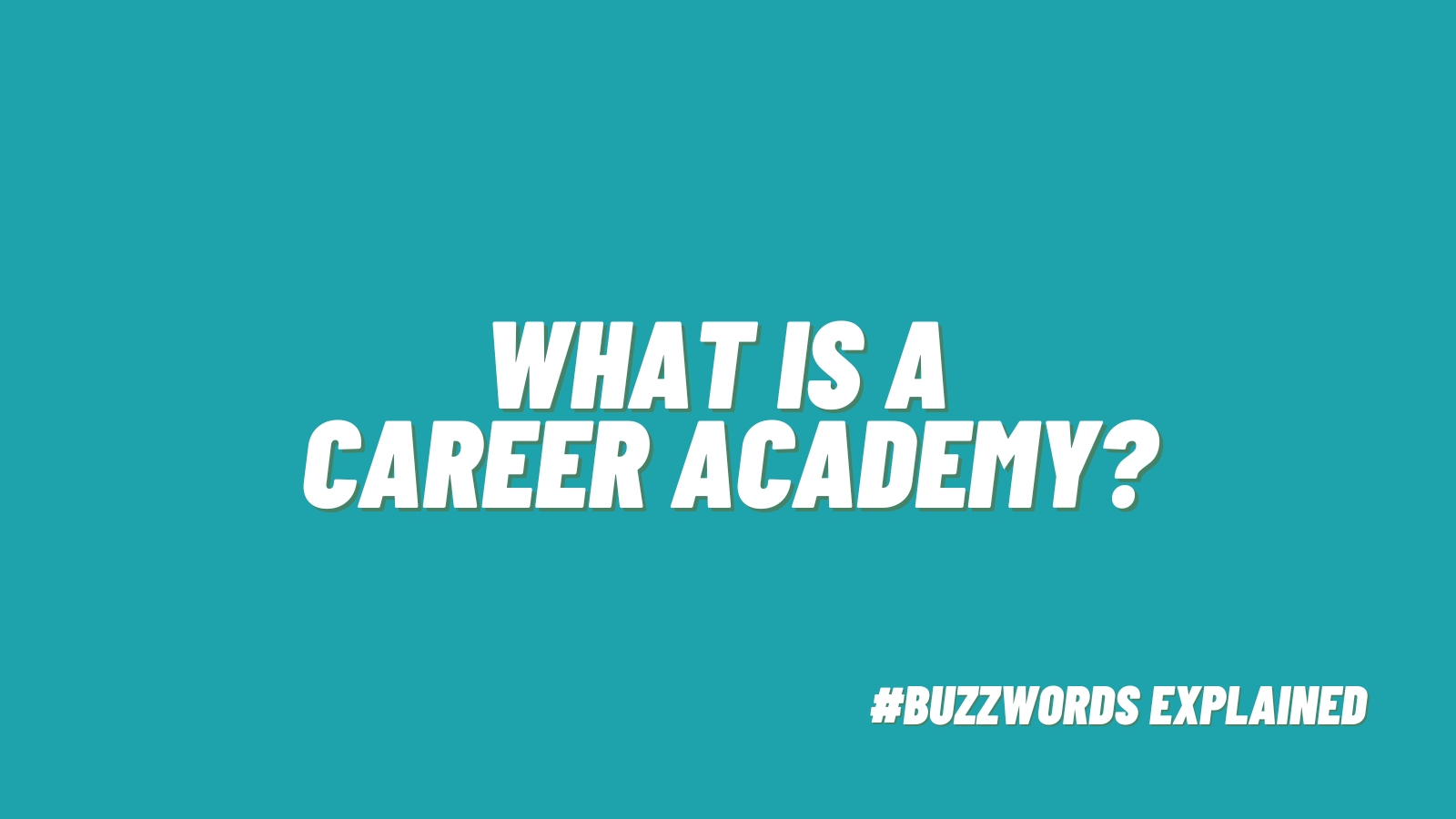Career academies have been around since 1969. But if you’re just hearing about them for the first time, you came to the right place. We’ll explain what the career academy model means and so much more.
What is a career academy?
Career academies are schools within schools that link students with peers, teachers, and community partners in a structured environment that fosters academic success. Career academies are designed to prepare students for both college and careers while strengthening communities through alignment and opportunity.
A career academy has three key elements:
- A small learning community (SLC)
- A college-prep sequential curriculum with a career theme
- An advisory board that forges partnerships with employers, higher-education institutions, and the community
How do career academies work?
In many career academies, incoming 9th graders are enrolled in Freshman Academy, in which they discover their interests before selecting an academy and pathway for their sophomore through senior years. (Some schools/districts start their academies in other grades.) The career academy theme can align to any of the Career Clusters within the National Career Clusters Framework and, for example, can focus on exciting course progressions within fields such as performing arts, agribusiness, construction, or aviation, each of which would be driven by student interest.
Teams of teachers work across several academic and technical subjects, grouping students with cohorts for these classes and following a program of study. Courses relate to real problems being faced by real companies and communities, and learning takes place both in and out of the classroom.
In addition to the hands-on experiences and project-based learning found within their career academy, students can also benefit from taking “global” classes, such as Advanced Placement (AP) courses and general electives that fall outside the focus of their career academy theme.
The advisory board, made up of local business and community partners, helps to deliver work-based learning experiences (e.g., shadowing, community service, mentoring, internships, and apprenticeships). The relationships and mutual reciprocity that result from business and industry involvement within career academies are so beneficial—to students, schools, and communities.
Career academies offer hands-on experience and a clear path to future careers. Think of it as giving students a head start in the race of life, with the added bonus of fewer ‘When will I ever use this?’ questions. By providing mentorship opportunities and industry partnerships, we ensure that students are not only learning but also networking with professionals who can guide them.
Chad shishido, pearl city high school academy coordinator, hawaii
Why are career academies beneficial?
Career academies boast higher test scores as well as higher attendance, graduation, and post-secondary transition rates. Why? With their interdisciplinary nature, career academies are highly effective at increasing student engagement. Think about it: Geometry concepts become more relevant when taught via architecture and construction. And students might be much more interested in an English language arts assignment if it’s connected to something they need to know how to do for their pathway, like technical writing.
The model is good for teachers too. Career academy teachers experience enhanced connection through networks of support (school counselors, administrators, instructional leaders) for teacher teams. And that leads to a positive school culture where teachers want to stay (which, in turn, is great for students too!).
Can you have career academies in small or rural schools?
Education in rural areas has its own set of challenges. To run an academy, small and rural schools need to tailor curriculum to their local workforce needs, engage students with hands-on learning, and forge ties with local employers and higher-education institutions. That’s a lot. But by integrating college and career pathways into their curriculum, these schools can provide students with a clear vision of their future, practical experience through internships, and the chance to earn college credits or industry-recognized certifications while still in high school.





